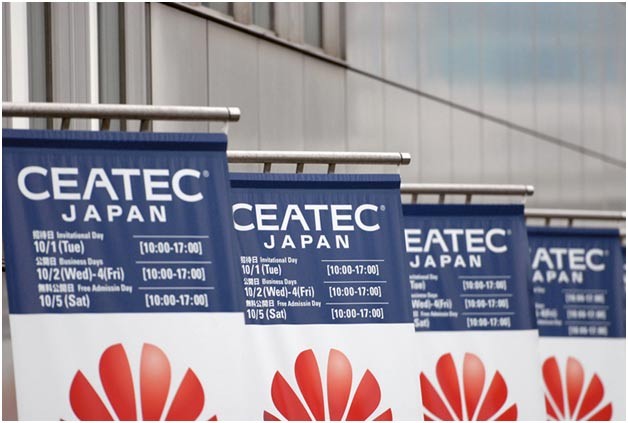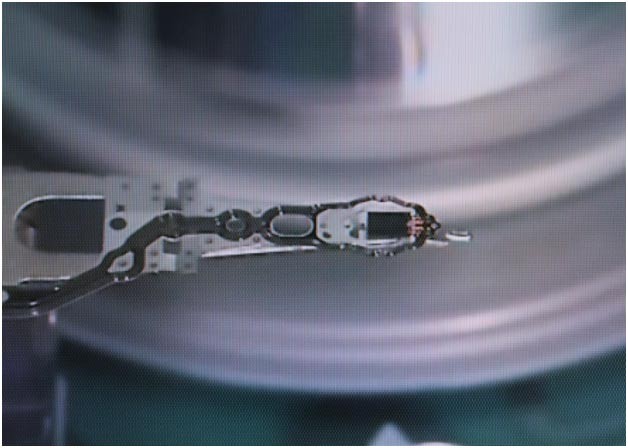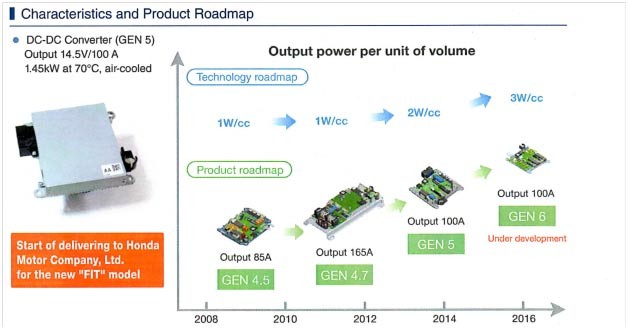
The Combined Exhibition of Advanced Technologies (commonly known as CEATEC) is the largest annual IT and electronics trade show in Japan. In fact it’s Asia’s biggest trade show. It was held October 1-5 at the Makuhari Messe Convention Center. Virtually every major Japanese electronics maker has a presence at the show, which serves as a platform to introduce new products and technologies. But instead of fawning over the glitzy multimedia spectacles such as "Ultra High-Definition" ("Ultra HD") TVs that present native video at a minimum resolution of 3,840 × 2,160 pixels, or autonomous self-driving cars from Toyota, Nissan and Honda that steered themselves around an indoor track, I'd rather examine the technology represented by components and devices makers also exhibiting at the show.
Why? Three reasons. First, Ultra HDTVs are way too expensive (and there is precious little programming you can show on them). Second, self-drive cars are not coming to your local car dealer anytime soon. And third, in many respects this was a year in which the technological ground work was being prepared and exhibited at numerous booths for possible breakthrough designs coming in the next year or two. So with that in mind here’s a look at some of the new and notable developments that caught this reporter’s eye.
Because it has the potential to serve as a basis for future high-density magnetic recording technology, TDK was awarded the show’s Grand Prix prize for its Thermal Assisted Magnetic Head (Fig. 2). Demoed at its booth TDK’s thermal-assist magnetic head recording ("HAMR" technology) operated under Windows 7 to record and play back video data using a hard disk supplied by Seagate Technology, rated for a revolution speed in excess of 10,000 rpm. Basically, TDK researchers found that magnetic surfaces used in hard drives react differently at higher temperatures, and that by heating the disk surface they could squeeze more information in per square inch. Thermal assisted magnetic heads represent a completely new approach that combines magnetic spintronic technology applied in conventional heads with photonics technology. Compared to existing HDD products, recording density can be increased by a factor of two or more, according to TDK. The company also pointed out that the technology will save power on a "per GB" basis since fewer drives will be used for a given storage capacity.
Demand for hard disks with extremely high storage capacities will come from data centers expected to handle the imminent explosive expansion in data volumes (the so-called "Big Data" effect).

Figure 2. TDK’s Thermal Assisted Magnetic Recording Head
TDK also pulled the covers off a compact and lightweight DC-DC converter (Fig. 3) designed for automotive applications that efficiently drops output voltage for charging the auxiliary electric equipment in hybrid (HEV) and electric vehicle (EV) batteries. The new devices achieve 100A output 15% greater than the conventional designs − but are only 600cm3 in size compared to the 1000cm3 of existing models. Through modified circuitry and miniaturized parts these devices achieve higher power density for automotive DC converter capacity; twice that of the older types at 2 W/cm3.

Figure 3. TDK’s DC-DC converter for automotive apps.
A really good measure of the technological strength of an industry is how well it does things that can’t be done easily. Gesture control is a good example. Murata exhibited surface-mounted ultrasonic sensors optimized for detecting 3D gestures on smartphones, laptops and tablets. The sensor will enable spatial operational control without touching the panel. An Elliptic Labs' software bundle is employed to allow users to gesture in various directions with two hands without having to keep their hands in front of the camera or atop the phone or tablet at all. The sensor also can be applied for measuring the distance between the user and target object.
The Murata/Elliptic Labs solution won the CEATEC 2013 Innovation Award in the Computing and Networking category because it gives portable device manufacturers a way to include technology that responds to natural hand movements anywhere on the device screen, while using low power and delivering high resolution.
One of the smallest items on show but potentially one of the biggest hits was the world’s first 008004 size chip ferrite bead (0.25 x 0.125mm), also from Murata (Fig. 4). By way of review, a chip ferrite bead is a type of EMI suppression filter that uses dissipation in ferrite to eliminate noise generated by electronic devices.
In 2012 Murata developed the world’s smallest 08004 size monolithic ceramic capacitor and chip inductor; the company has now followed up these developments by introducing a 008004 size ferrite bead at CEATEC 2013. The part features 75% lower volume than the 01005 size (0.4 x 0.2mm) bead that is currently installed in some smartphones.

Figure 4. Murata’s tiny ferrite bead
Recently, image analysis technology targeting human faces and motions has been incorporated into more and more types of equipment. Examples include air conditioners capable of automatically adjusting the temperature to the level that people feel most comfortable with, lighting products with efficient automatic control depending on the presence of people, their movements, or other conditions and cars that prevent drowsy or inattentive driving by recognizing signs of fatigue in the driver's face.
Omron Corporation used CEATEC as a venue to announce development of its Human Vision Component (HVC), a new image sensing component that can be embedded in a variety of devices and equipment. With Omron’s HVC all the processes up to image analysis are handled within the component itself. The user simply needs to mount the component on the equipment to obtain information on the conditions and intentions of people. The HVC incorporates ten algorithms from the company’s OKAO Vision and a camera module designed into a compact configuration. OKAO Vision is OMRON's image sensing technology capable of recognizing the intentions and conditions of people through face recognition, estimation of facial expressions, age estimation, gaze estimation, hand detection, and other functions. The element measures 60 mm x 40 mm, requires 5V power and has a UART 3.3V I/O interface. Launch of the standard-type HVC is scheduled for December.
TE Connectivity operated a Moon Walker demonstrator that enabled show-goers to experience the gravity of the moon (1/6th that of Earth). Using TE connectors, wires, relays and sensors around the machine the demo automatically simulated a reduced gravity effect based on the weight of the rider − a computer behind the scenes continuously calculated and adjusted exactly how much lift it gave the rider once he or she was strapped in. Because of the "reduced" gravity, riders could jump 2m to almost 5m from the surface and turn 180 degrees left and right. Dynamic sensors within the balance motor ensured that CEATEC visitors did not spin out of control while bouncing around at 0.6G. Seven colored landing points placed around the unit provided targets for the riders, who earned points based on the precision of their ‘jumps’. Floor sensors detected your landing spot. The aim to this demo was to try and hop between the specific colored spots on the ground.
Also interesting at CEATEC: A DC-DC converter (reference model) from Alps combined a current sensor about 1/13th the size of existing products (it does not use a magnetic core to concentrate flux resulting in the considerable size reduction) with what the company calls its Liqualloy reactor with an SiC device developed by Rohm. A reactor is a component found in the boost converter located between the battery and inverter. It is a key device that changes voltage by alternating between energy accumulation and discharge. Liqualloy, jointly developed by Alps Electric and Tohoku University, dramatically reduces magnetic loss enabling higher efficiency DC-DC converter designs. A collaborative development of Alps Green Devices Co., Ltd., Rohm Co., Ltd. and Myway Plus Corporation the converter with SiC power module has been compacted to 1/10th of the size of equivalent existing converters.
Said to be the first of its kind in the world, Taiyo Yuden’s 330uF capacitance EIA 1210 size MLCC offers a capacitance increase of over 50% in the same size capacitor as compared to its 220uF product. The product aims to smooth the output and ensure stable operation in power supplies used in various devices.

